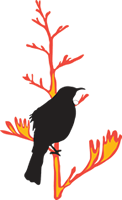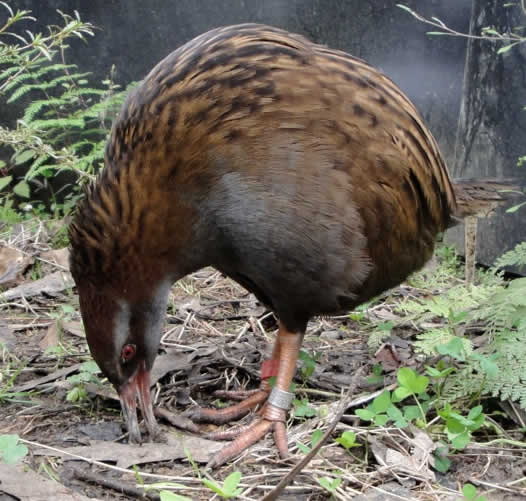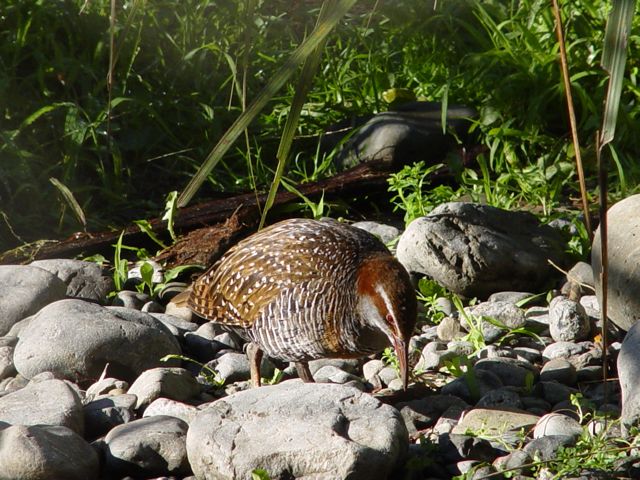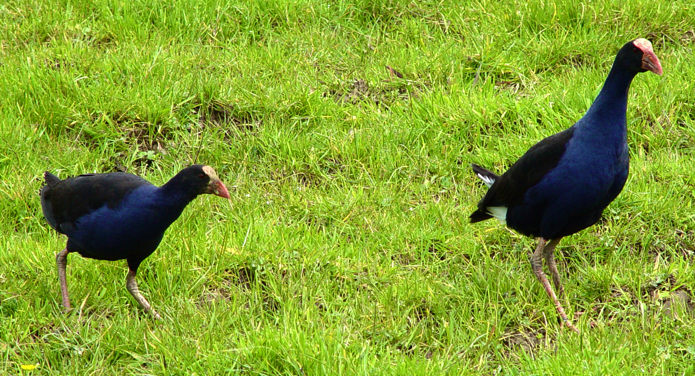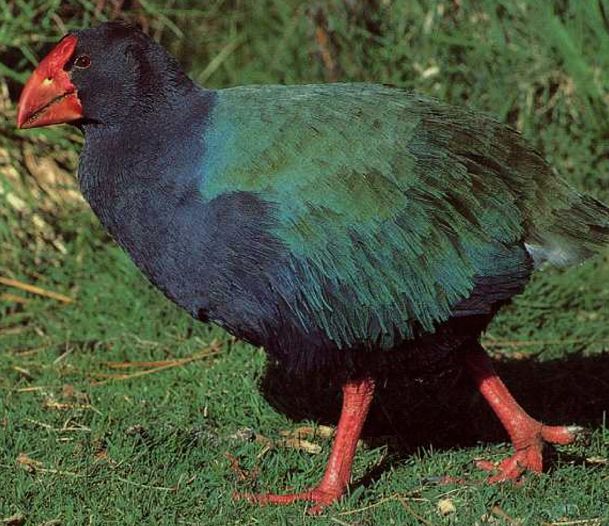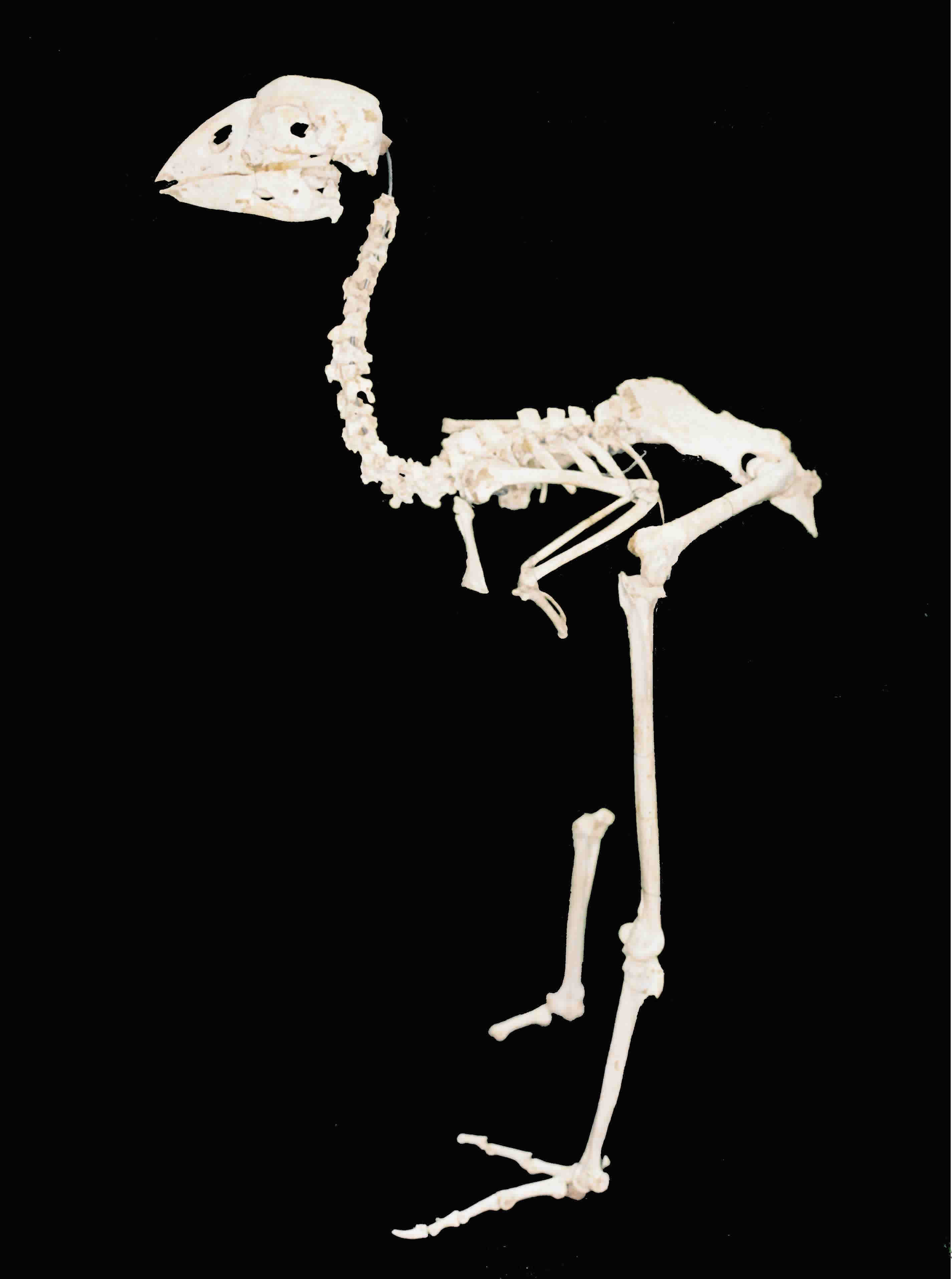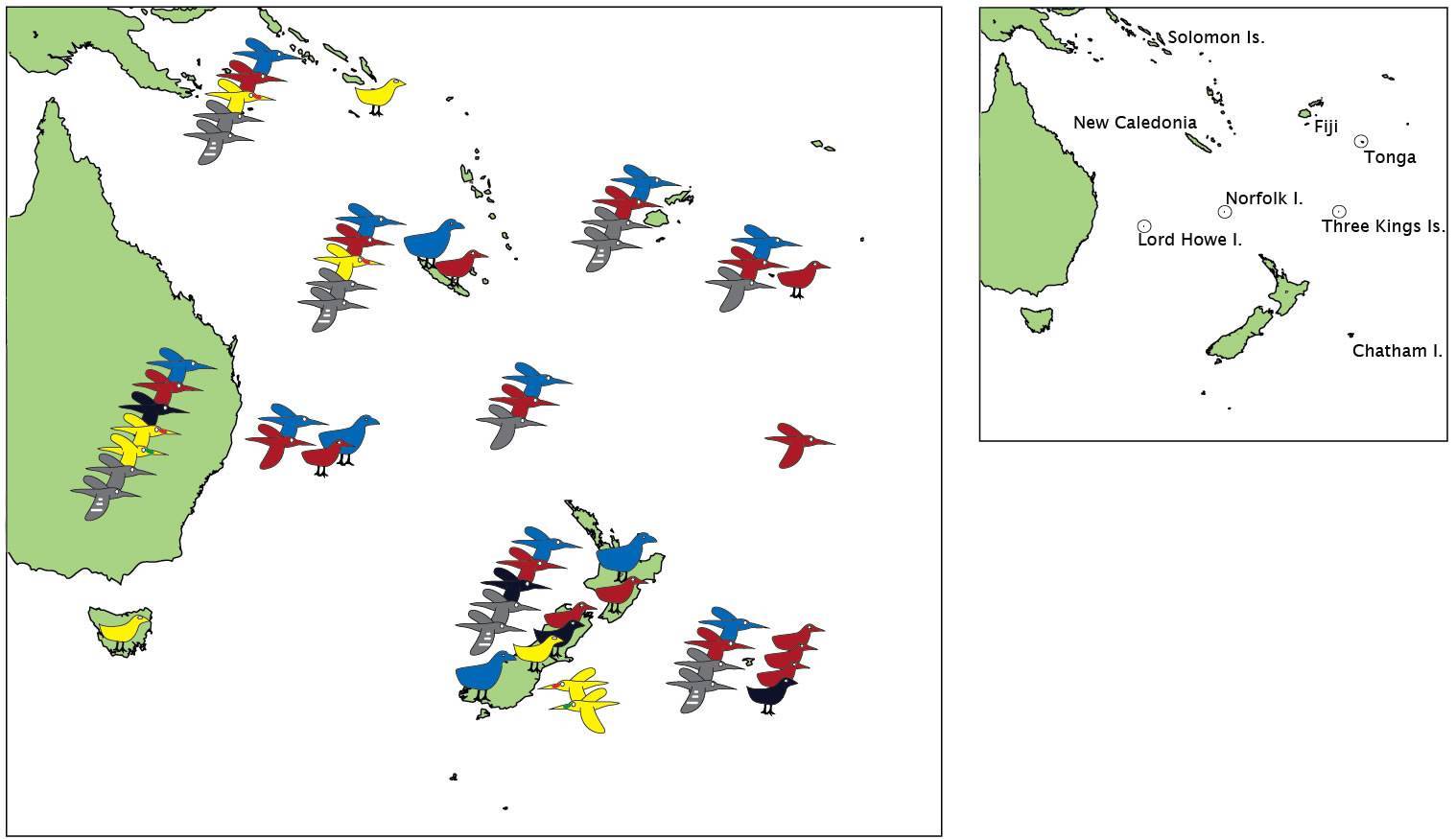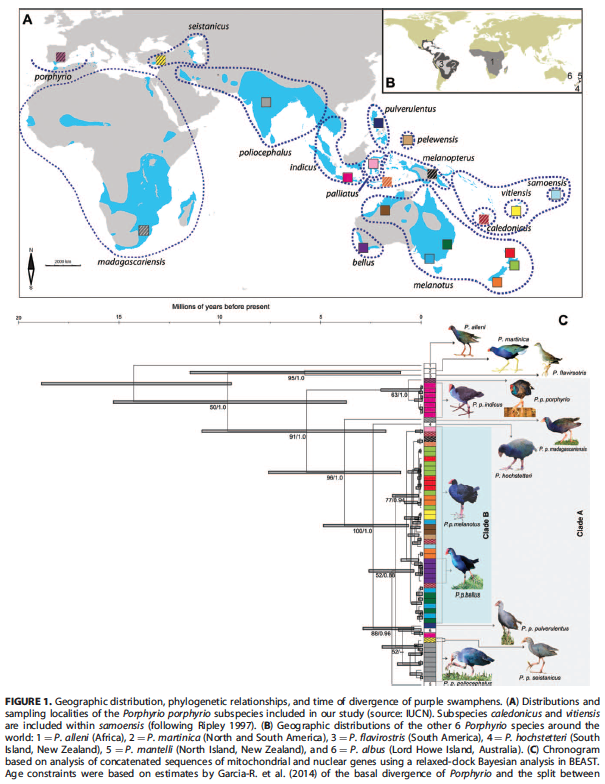RAILS The land-bird family Rallidae is replete with instances of, islands having representatives of several widespread species, several wide ranging species comprise regional variants (~subspecies), and derived island endemics (including multiple origins of flightless species). For example Porphyrio and Gallirallus taxa are spatially partitioned from Africa and the Mediterranean east to the Pacific and appear to have colonised New Zealand at least three times, resulting sometimes in speciation. Our research progamme is exploring the phylogenetic, morphological and population genetics implications of this situation to examine the apparent paradox of how wide-ranging (mobile) species can evolve into local, flightless insular species. Fundamental to our question is the issue of how even are rates of gene flow (migration) through time.
Left, the flightless New Zealand weka (Gallirallus australis) and right, a flying close-relative the banded rail (Gallirallus philippensis).
The modern population of purple swamphen or pukeko (Porphyrio porphyrio) (left) probably arrived in New Zealand no more than 300 years ago according to archaeological evidence. The endemic flightless takahe (Porphyrio hochstetteri) (centre) evolved from a pukeko-like ancestor, that must have arrived earlier in New Zealand's avian history. A notable difference, apart from size is the green/bronze back of takahe, a trait shared with swamphens from Africa. A second species of takahe existed in North Island New Zealand until early European time, but is now extinct. It was taller and probably heavier than its South Island relative. No image of the species exists, but this is its skeleton (right), from a specimen held at Te Kauri, Waitomo, New Zealand. Multiple Invasions Several bird lineages have each contributed to New Zealand avifauna by multiple colonisation. Most prominent are the rails (Rallidae), whose diversity illustrates this process of species accumulation. Only genera found in New Zealand are represented here; flying species by winged-bird icon and flightless by walking-bird icon. Right-facing flying-birds indicate breeding populations, left-facing ones indicate vagrants. Each flightless-bird icon indicates a different endemic species in the location indicated, and each different flying-bird colour/pattern represents a different species of; Porphyrio blue, Gallirallus red, Fulica black, Porzana grey, Gallinula yellow. Several of the flightless species became extinct after human colonisation.
Our recent analysis of genetic variation shows that diversity of Porphyrio (blue icons above) is geologically young (<3mya) even though this includes populations of widespread flying swamphens and flightless island endemic species (below).
References (Go to Publications page) Trewick SA, Worthy T. 2000 Origins and prehistoric ecology of takahe: flightless Porphyrio (Aves: Rallidae). Chapter 4, Pp: 31-48. In: William G.L. and I.G. Jamieson (eds) The Takahe: 50 Years of Conservation Management and Research. Otago University Press, Dunedin. Trewick SA. 2011. Vicars and vagrants: Assembly of the New Zealand avifauna. Australasian Science 32: 24-27. García-R JC, Trewick SA. Dispersal and speciation in purple swamphens (Rallidae: Porphyrio). The Auk 132: 140-155 García-R JC, Gibb G, Trewick SA. 2014. Eocene diversification of crown group rails (Aves: Gruiformes: Rallidae). PLoS ONE, 9:e109635. García-R JC, Gibb G, Trewick SA. 2014. Deep global evolutionary radiation in birds: diversification and trait evolution in the cosmopolitan bird family Rallidae. Molecular Phylogenetics and Evolution. 81: 96-108. Trewick SA, Morgan-Richards M. 2014. New Zealand Wild Life. Penguin, New Zealand. ISBN-13:9780143568896 ISBN-10:0143568892
Multiple Invasions- RAIL TRACKS
|
|
